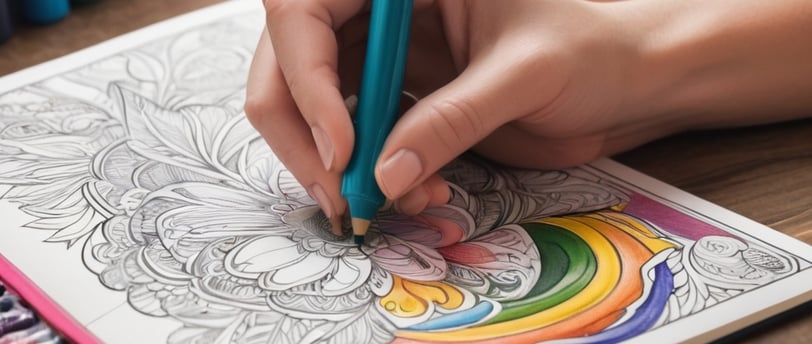Unveiling the Therapeutic Benefits of Coloring
A Path to Mindfulness and Relaxation
12/27/20232 min read


In recent years, the simple act of coloring, once thought to be only a child's activity, has been rediscovered by adults for its therapeutic benefits. This form of art therapy, involving the coloring of intricate patterns in coloring books, has become a popular tool for stress relief, mindfulness, and emotional expression. In this blog post, we will explore the various therapeutic benefits of coloring and how it can contribute to your overall mental well-being.
Stress Reduction and Anxiety Relief
One of the most significant benefits of coloring is its ability to reduce stress and anxiety levels. The act of focusing on a simple, engaging task such as coloring can shift attention away from negative thoughts and worries. The repetitive motion of coloring can be particularly calming, similar to the effects of meditation. It allows individuals to focus on the present moment, reducing the ongoing stream of concerns about past or future events.
Enhancing Mindfulness and Concentration
Coloring requires a level of concentration and attention to detail that fosters mindfulness. By concentrating on coloring within the lines and selecting the right colors, your mind becomes absorbed in the present task. This mindful engagement is a form of active meditation that can improve your ability to focus and stay in the present moment, a skill that is beneficial in all areas of life.
Boosting Creativity and Artistic Confidence
For many adults, engaging in creative activities can be daunting, especially for those who don’t consider themselves 'artistic'. Coloring offers a structured way to explore colors and patterns without the pressure of creating a piece of art from scratch. This can be a stepping stone to greater artistic confidence and may encourage individuals to experiment with more free-form creative endeavors.
Improving Motor Skills and Vision
Coloring involves a combination of fine motor skills and visual coordination. The action of holding pencils or crayons and coloring within lines can enhance motor control and hand-eye coordination. These skills are important in maintaining the health and functionality of the hands and eyes, especially as we age.
Emotional Processing and Self-Care
Coloring can serve as a form of emotional release and self-care. The choice of colors and the intensity of coloring can reflect an individual's emotional state, providing a non-verbal outlet for expressing feelings. Additionally, setting aside time to color can be an act of self-care, offering an opportunity to relax and engage in an enjoyable activity that is just for oneself.
Social Connection and Community
Coloring has given rise to communities and groups where individuals share their artwork, exchange coloring tips, and enjoy the camaraderie of a shared interest. This sense of community can be beneficial for those looking for social connection, especially for individuals who might feel isolated or lonely.
Conclusion
The therapeutic benefits of coloring are diverse, offering a simple yet effective way to reduce stress, enhance mindfulness, and foster creativity. Whether you are looking for a way to unwind after a long day, improve your focus, or simply enjoy a creative outlet, picking up a coloring book might be the perfect solution. In a world that’s often hectic and overwhelming, coloring provides a moment of calm, a space for relaxation, and a chance to reconnect with the joys of childhood.
